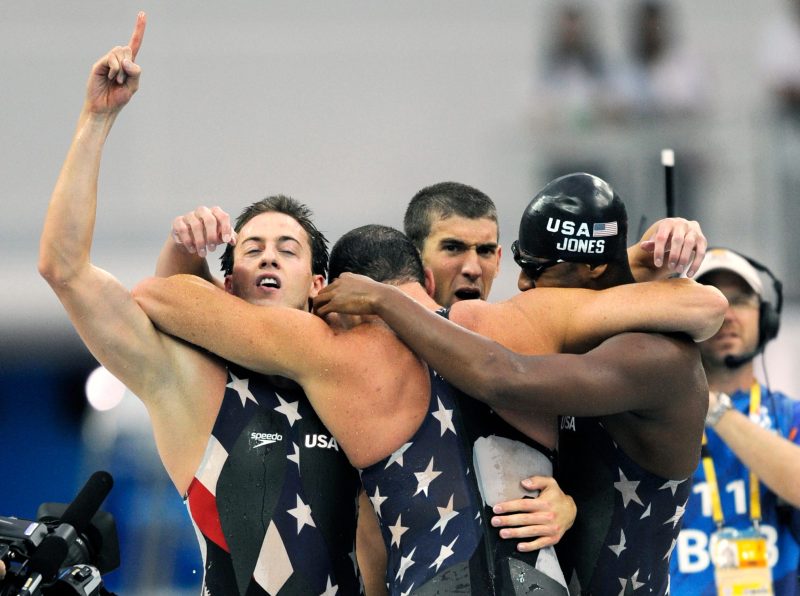The 2008 Beijing Olympics were a watershed moment for men’s swimming in the United States and globally.
Sixteen years later, the 2008 Games are perhaps best remembered for Michael Phelps’ dominant performance in the pool, where he racked up eight gold medals to break Mark Spitz’s long-standing record for most gold medals by an individual at a single Olympics.
Some of the iconic images of Phelps from those Games feature an anachronism. It’s not Phelps himself, though seeing him on NBC’s Olympics coverage this year with a ponytail and some gray hairs in his beard shows how much time has passed since those fateful days in China. It’s the swimsuit he and others are seen wearing.
The 2008 Olympics were the zenith for the full-body swimsuit, which athletes like Phelps used to glide through the water and set record times. Viewers tuning in from around the world to watch men’s swimming at the 2024 Paris Olympics will notice those suits are no longer used in competition — and they haven’t been for some time.
2024 Olympic medals: Who is leading the medal count? Follow along as we track the medals for every sport.
Here’s what you need to know about full-body suits in men’s swimming at the Olympics, and why they aren’t at the 2024 Paris Games:
Why are full-body swimsuits not allowed at the Olympics?
The full-body swimsuits that appeared during the 2008 Beijing Olympics had a short, albeit decorated, existence. The suits debuted for the Beijing Games and by the time of the 2012 London Olympics, they were gone, never to return (at least as of now).
It was a grand opening following just as quickly by a grand closing.
Their disappearance was the result of a 2009 decision from FINA, now known as World Aquatics, which banned the worldwide use of polyurethane and neoprene suits during competition. The regulations, which mandated textile-only fabric suits, went into effect on Jan. 1, 2010.
The design of the suits, which covered up most of a man’s body rather than the traditional Speedo, wasn’t the main issue. Rather, it was what they were made of.
Due to their material and their polyurethane panels, the suits increased swimmers’ buoyancy and speed while cutting down on fatigue over the course of a race. Upon their introduction in 2008, they led to nearly 200 world records, including 43 at the 2009 World Aquatics Championships in Rome.
While wearing the Speedo LZR, a 50% polyurethane suit, Phelps set seven world records during his landmark 2008 Olympics.
‘I’m glad they’re banning them, but they should have done them almost two years ago, before the damage was done to the history of swimming,’ USA TODAY Sports’ Christine Brennan said to ABC News in 2009 at the time of FINA’s ruling. ‘Unfortunately, it has rendered its record book worthless. It sadly is a joke because so many records have been broken with the new suit. These records will not be touched for years, if ever, because they were broken by swimmers using suits that will now be illegal.’
USA Swimming had reached the same conclusion months earlier, banning the suits in the United States in October 2009.
Full-body suits had existed before the Beijing Games, appearing as early as the 1996 Atlanta Olympics. Over the previous decades, male swimmers wore suits that resembled underwear briefs while taking other steps like shaving body hair to make themselves more aerodynamic in the water and shave fractions of a second off their times.
The material that came to dominate suits for men and women during the 2008 Games represented a new and ultimately untenable step.
Swimsuits at 2024 Paris Olympics
At the 2024 Paris Olympics, male and female swimmers will be wearing suits that adhere to certain specifications, all of which are reviewed by World Aquatics before each competition.
Men’s suits, which are commonly referred to as ‘jammers,’ can only extend from the waist to the knee. For women, their suits go from the shoulder to the knee.

